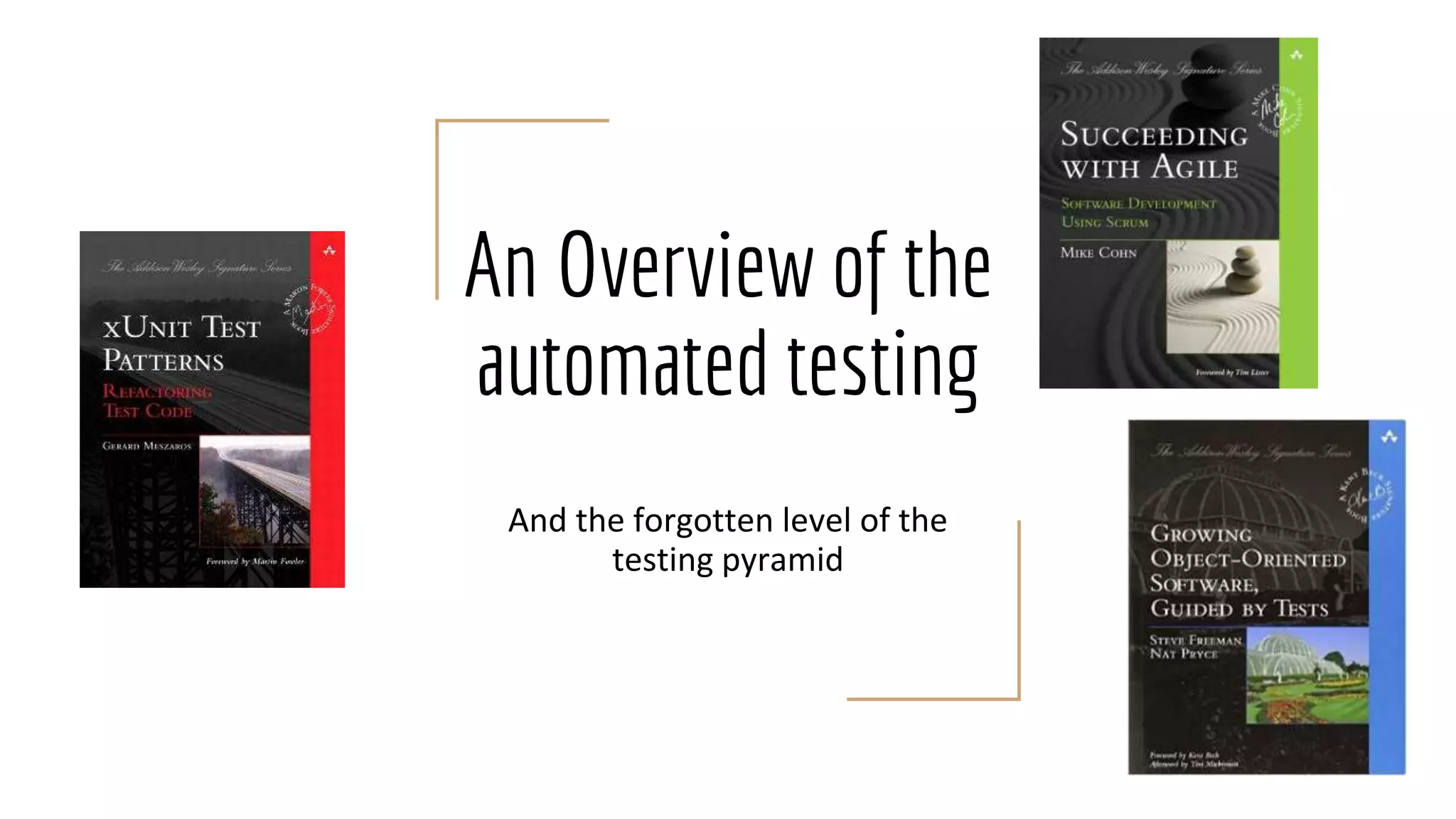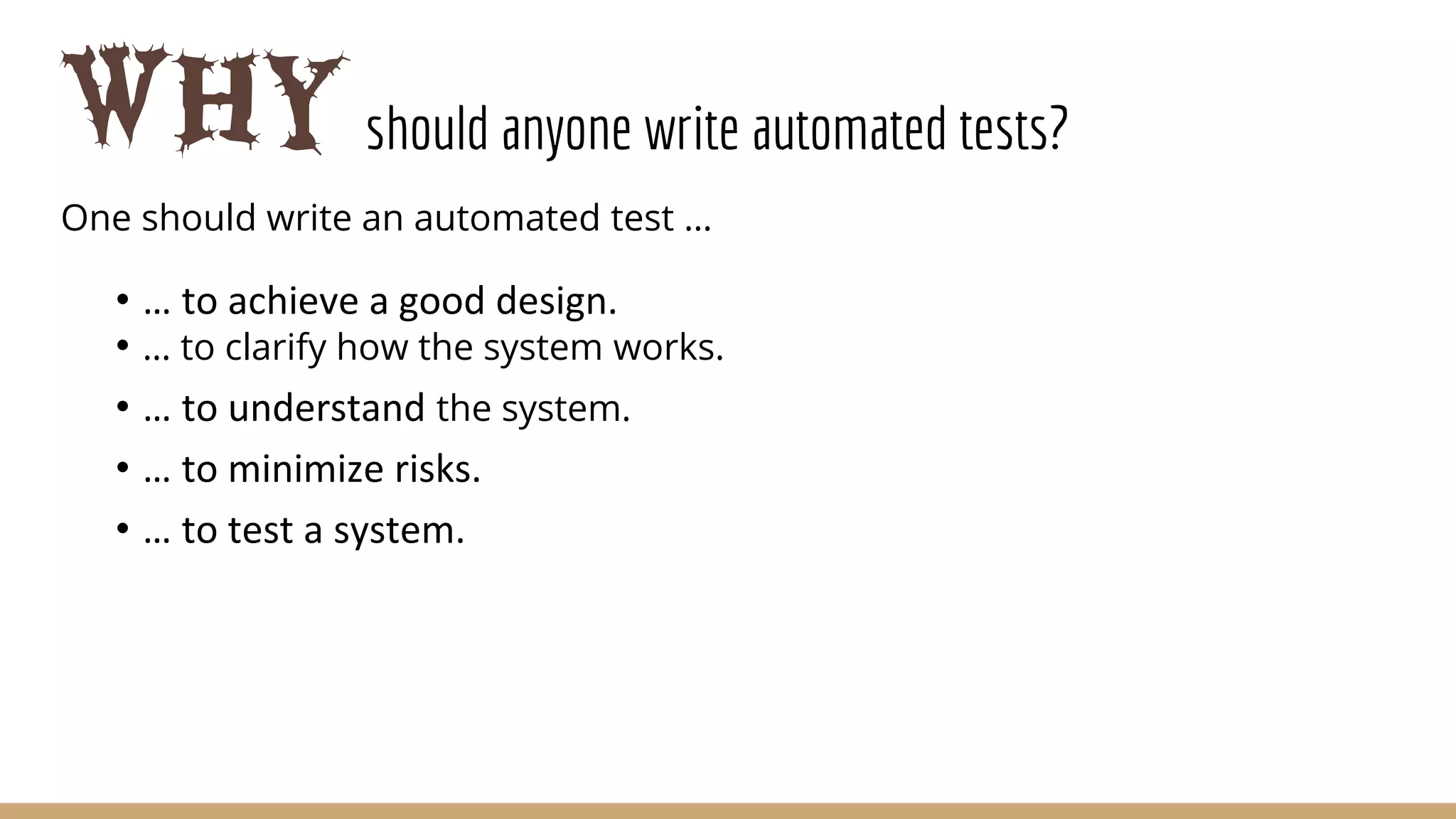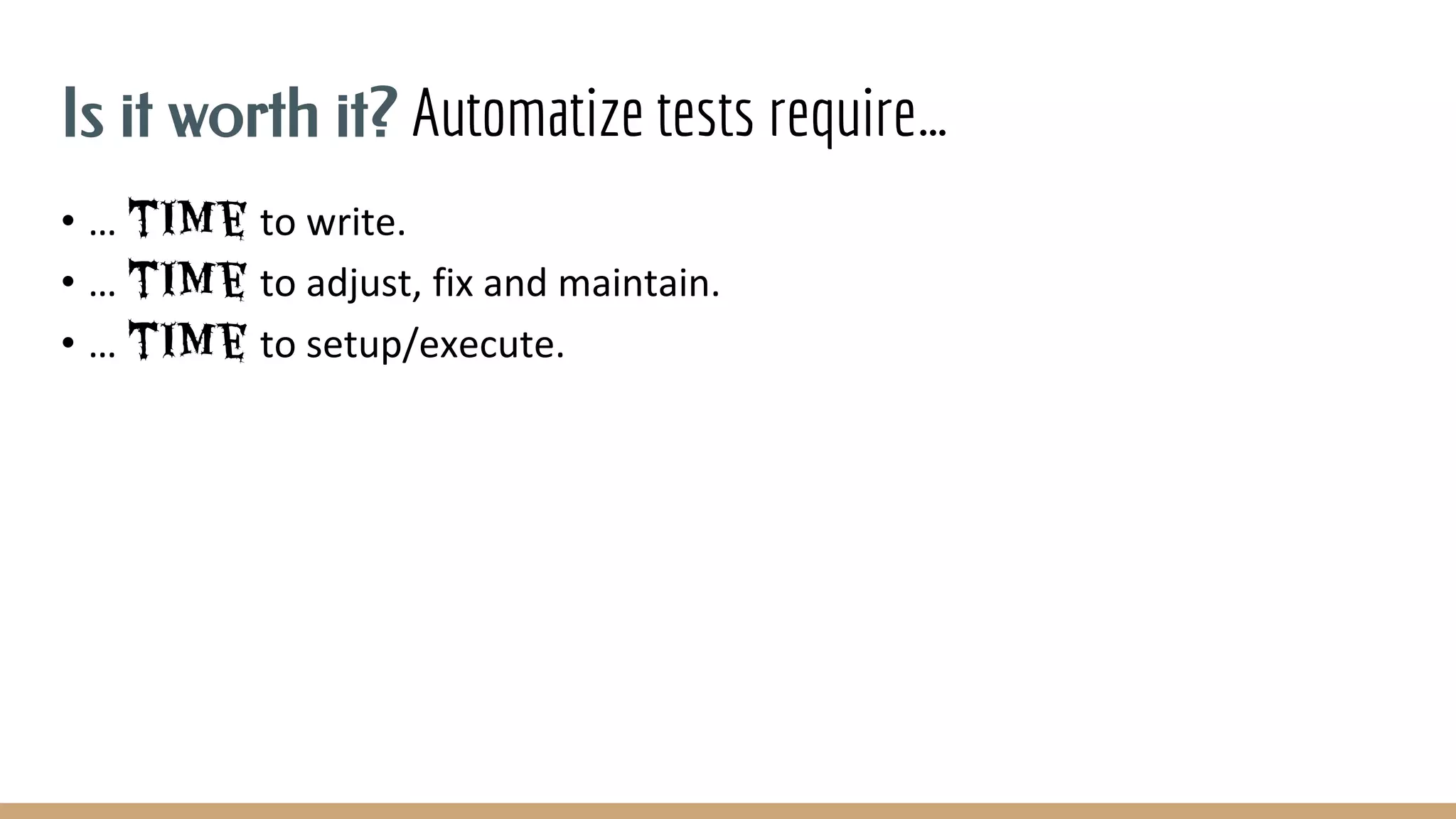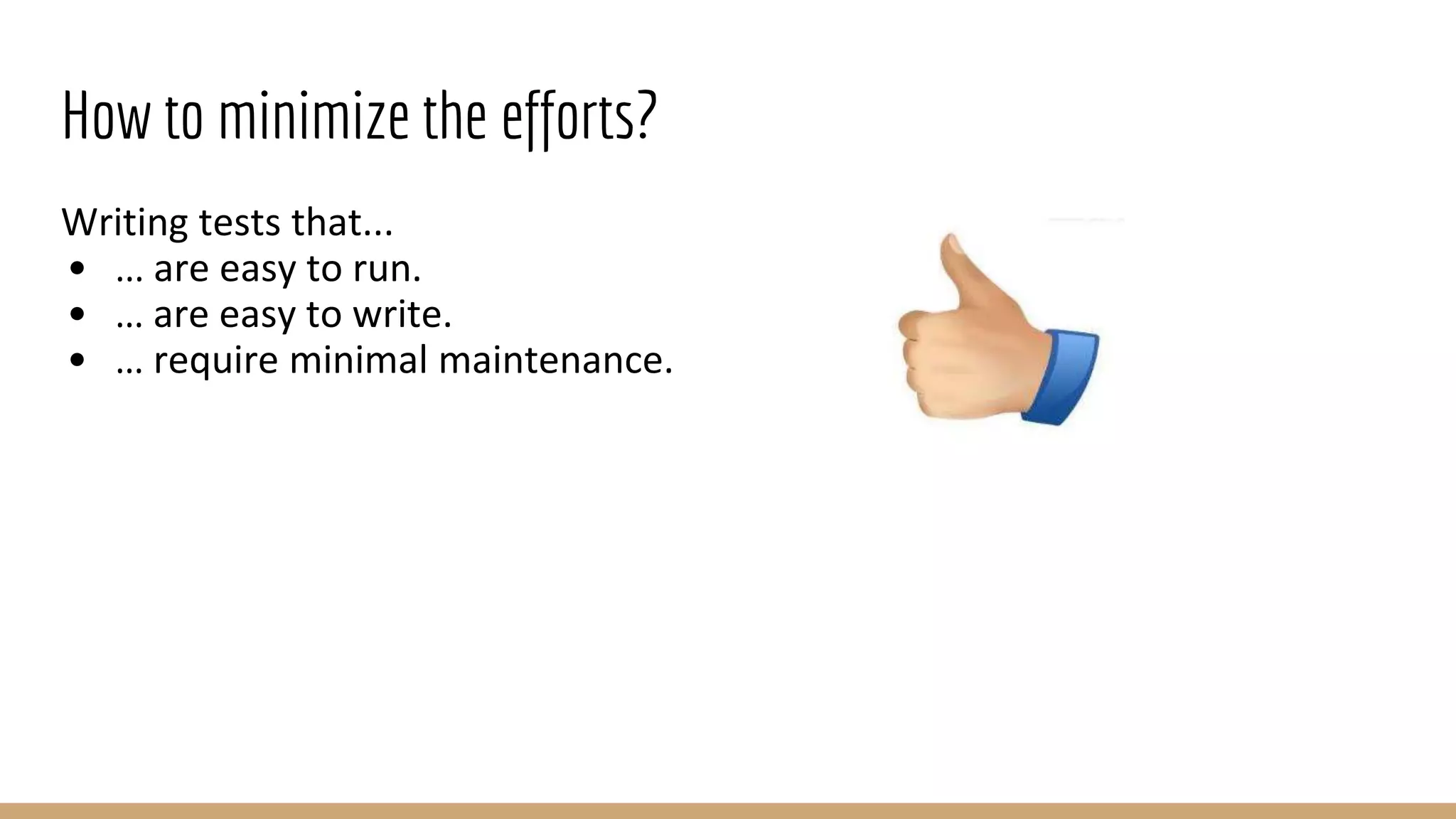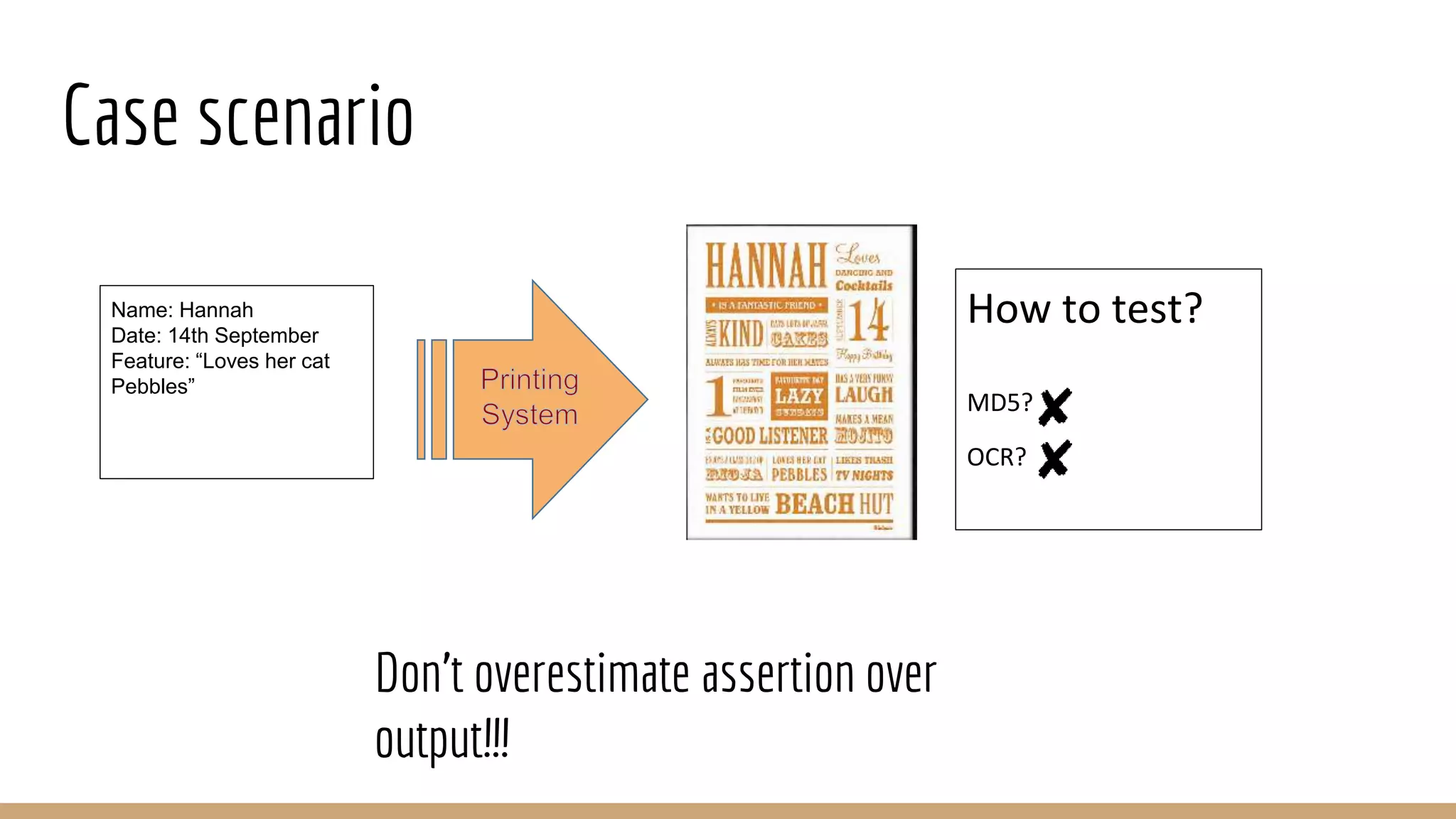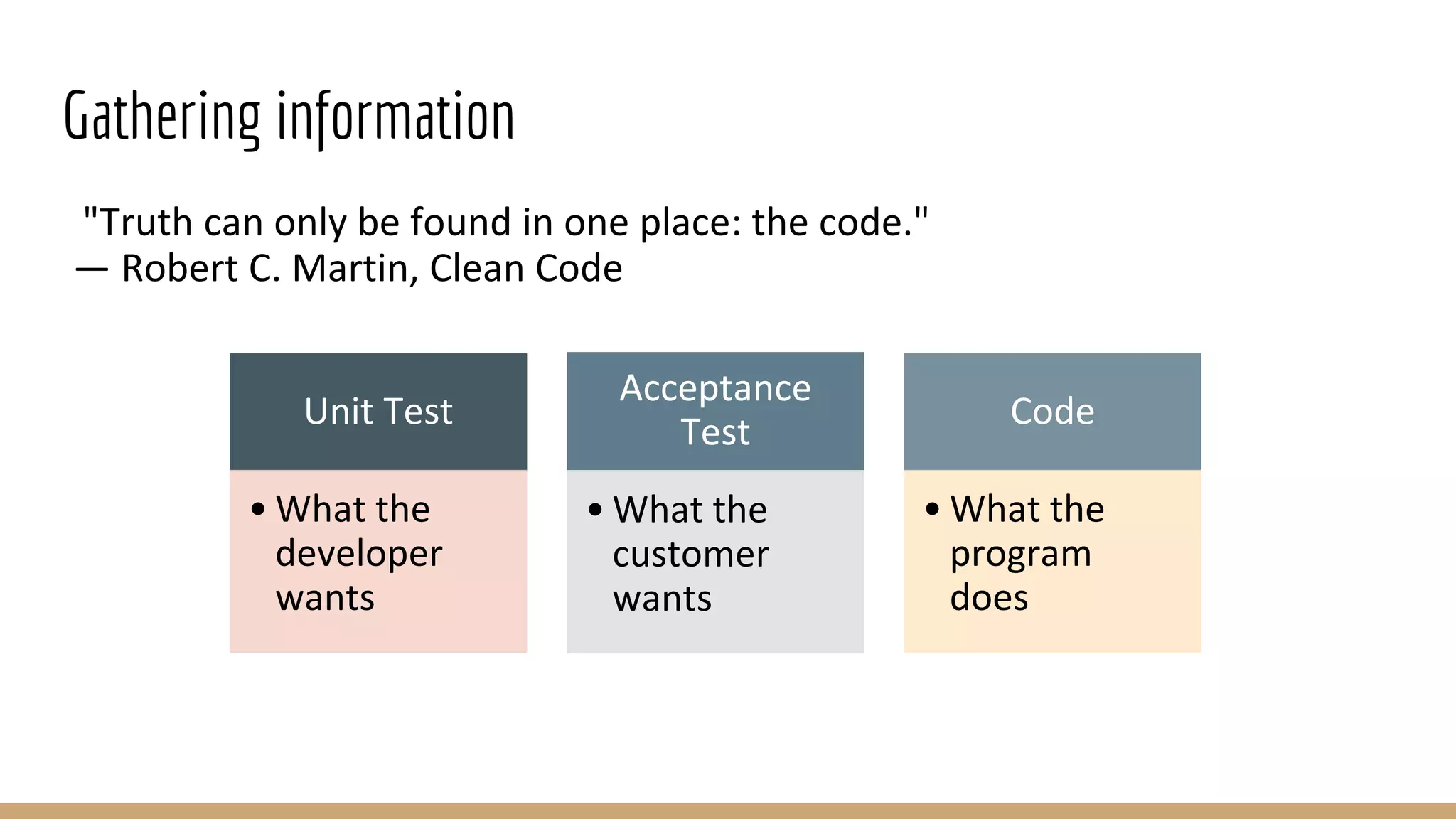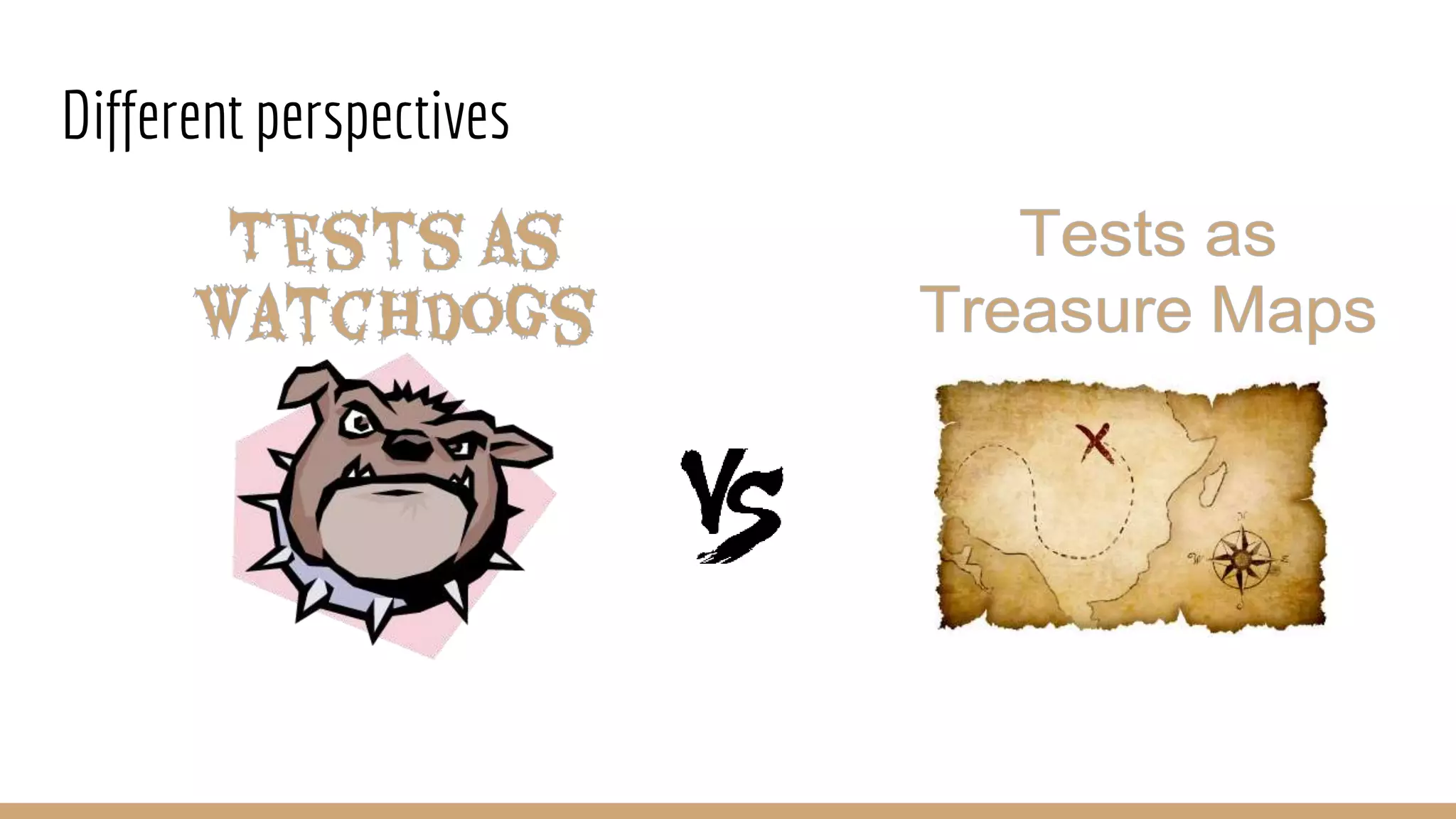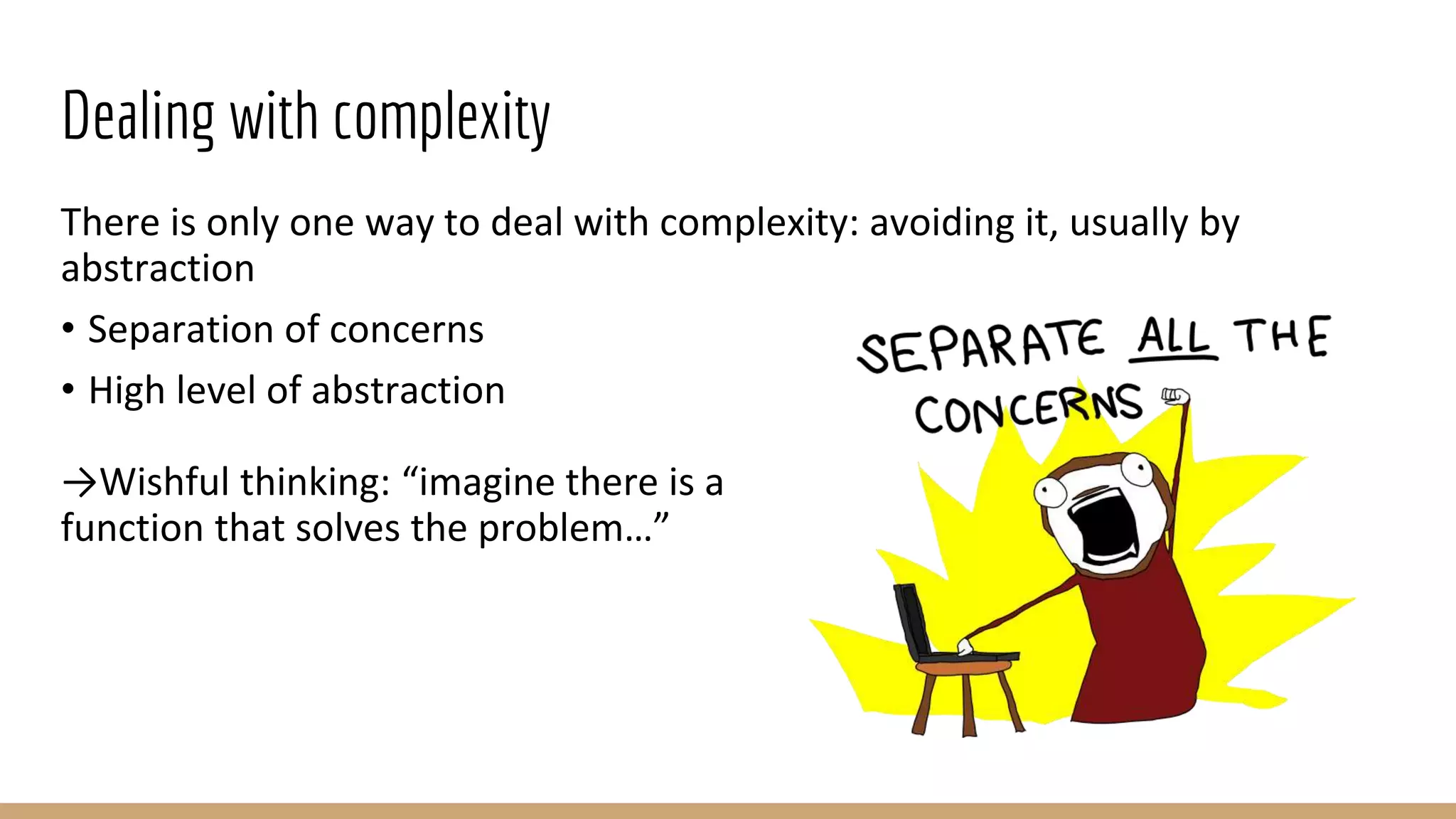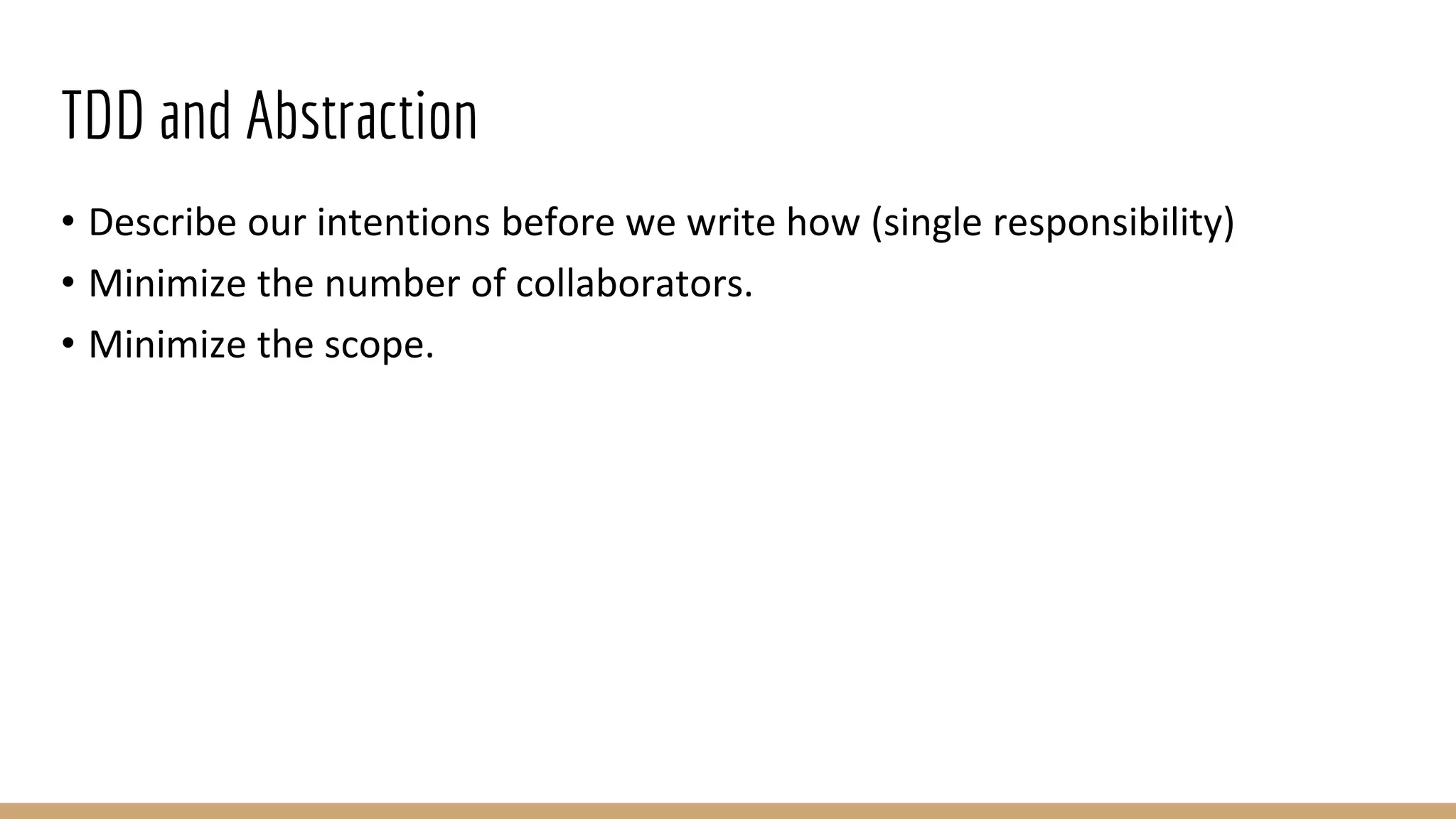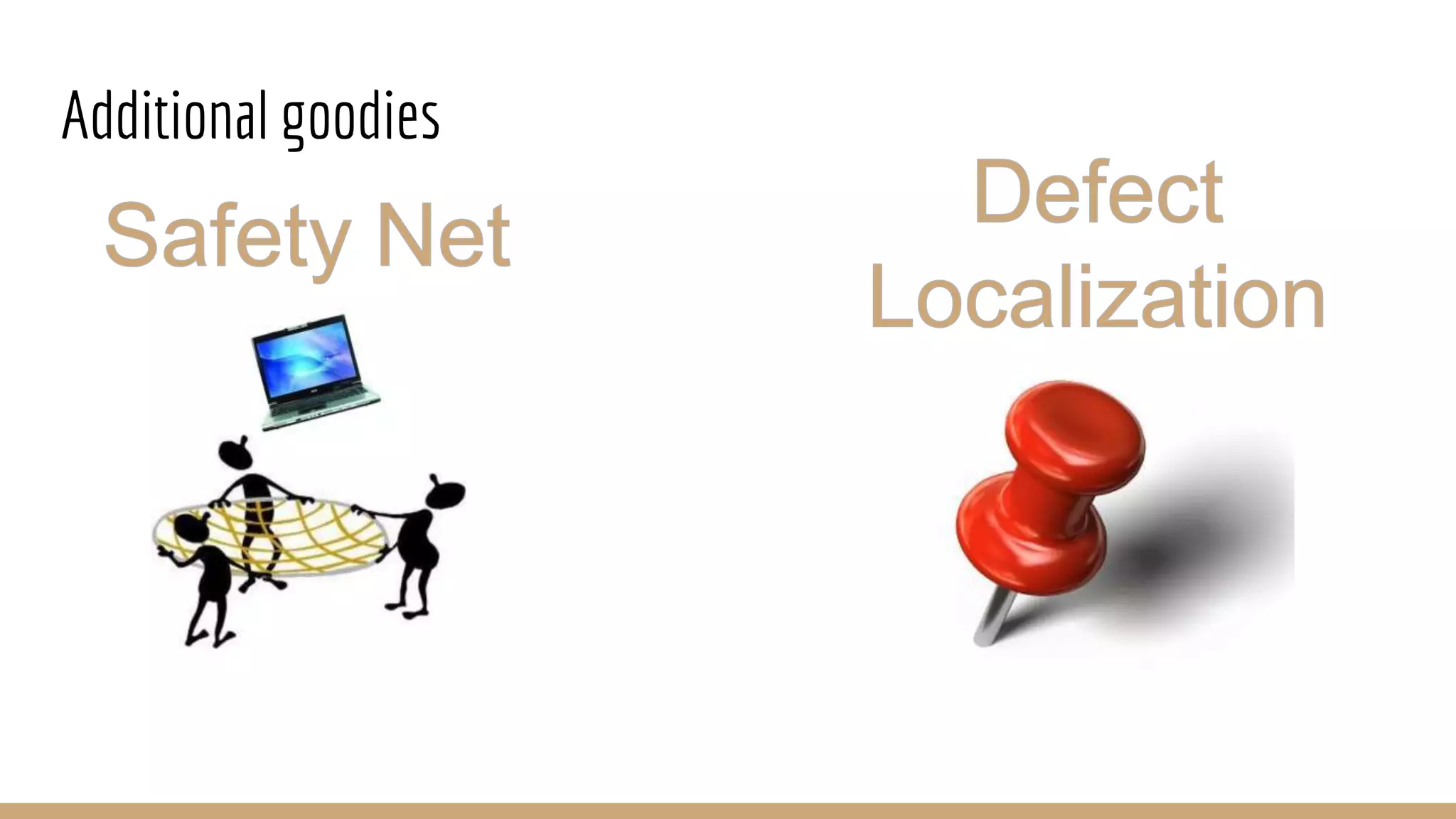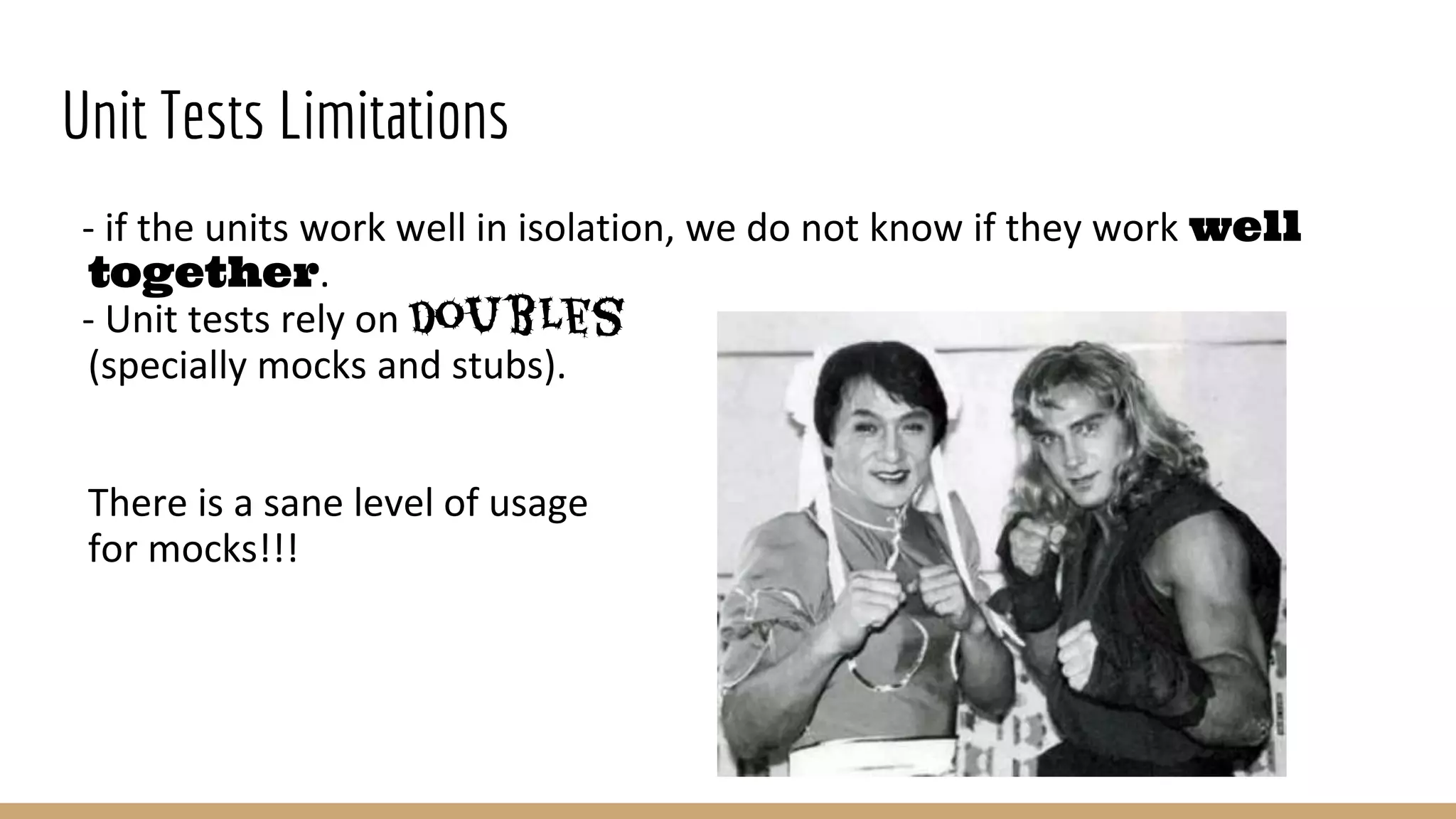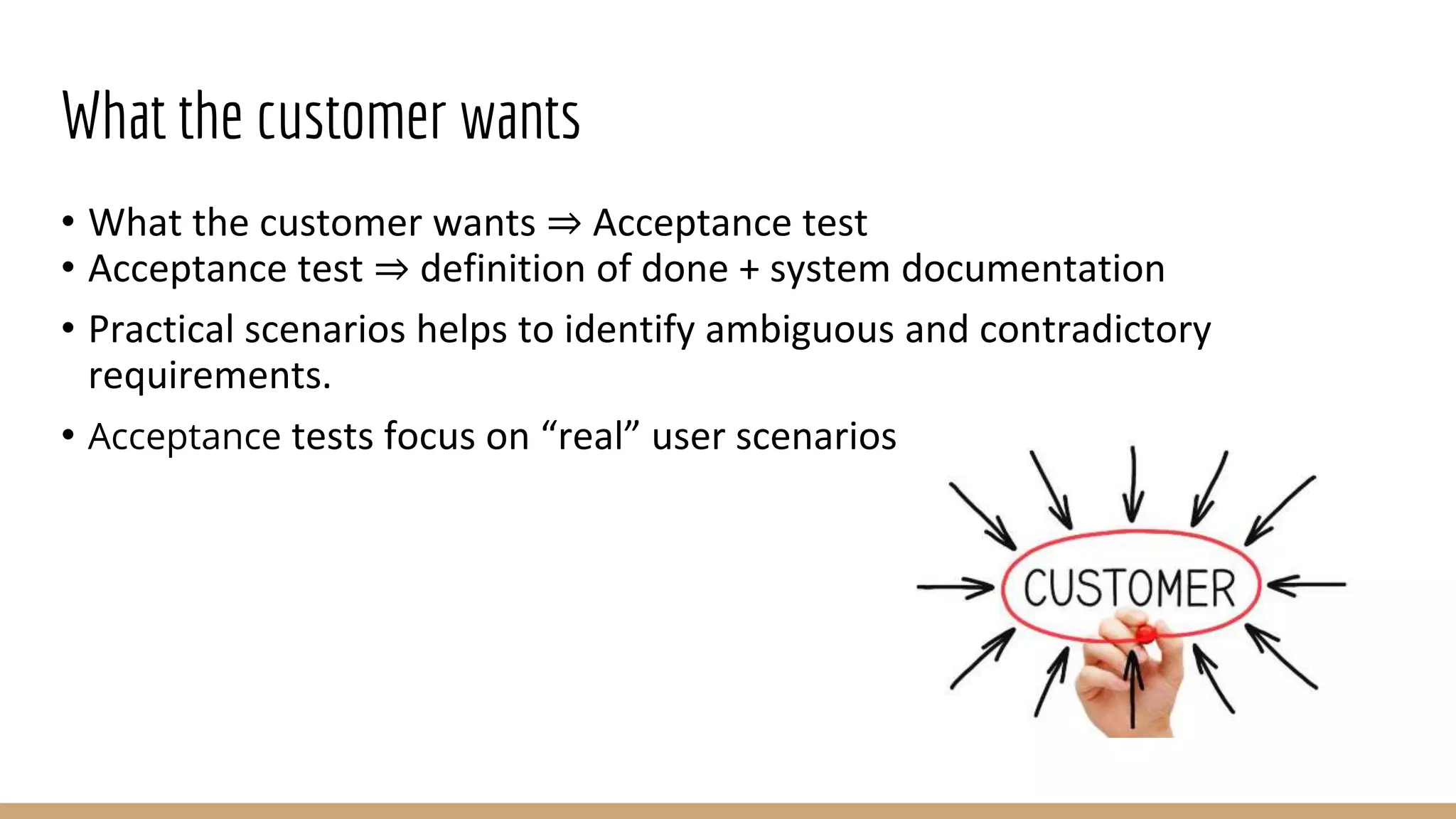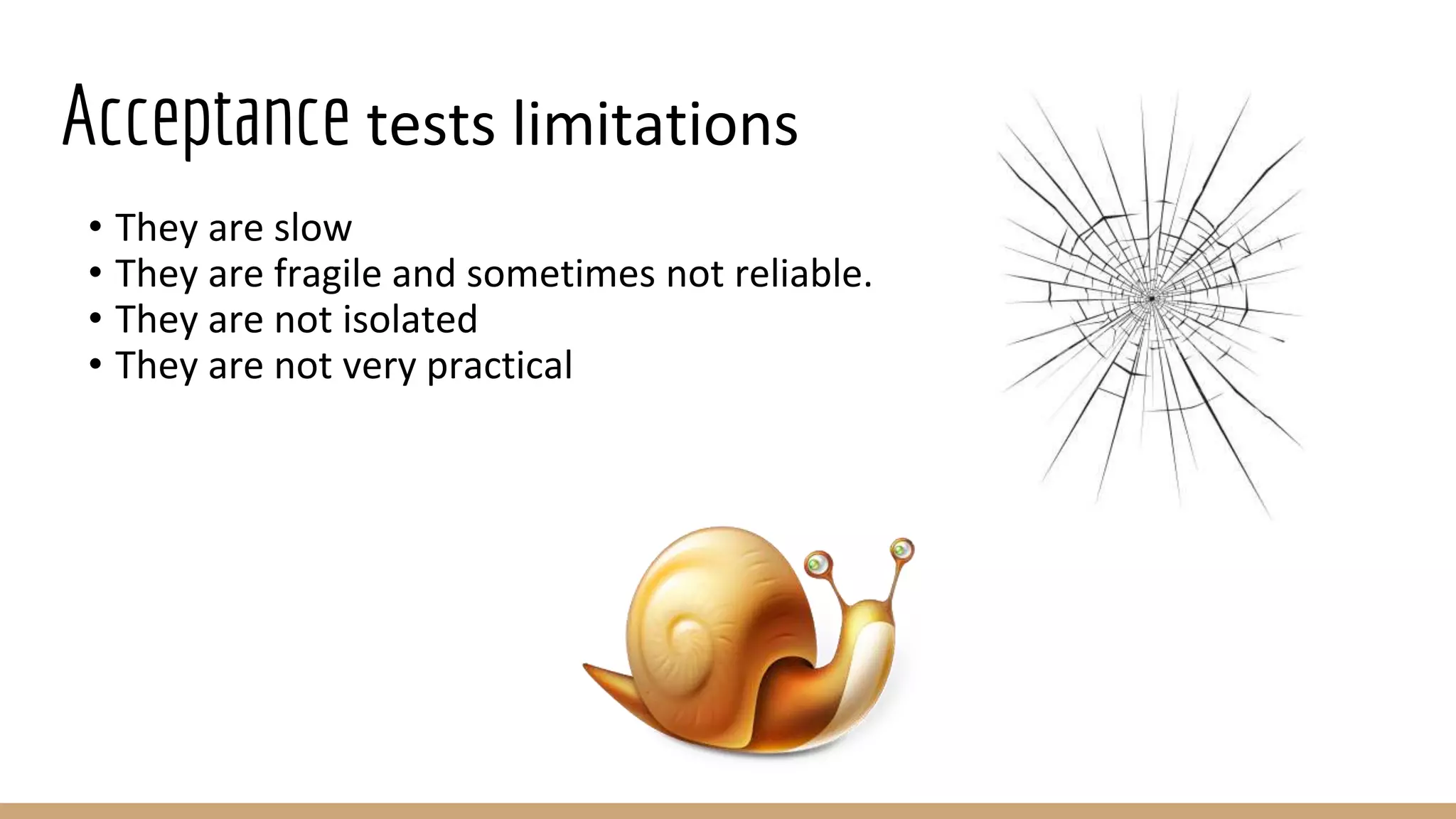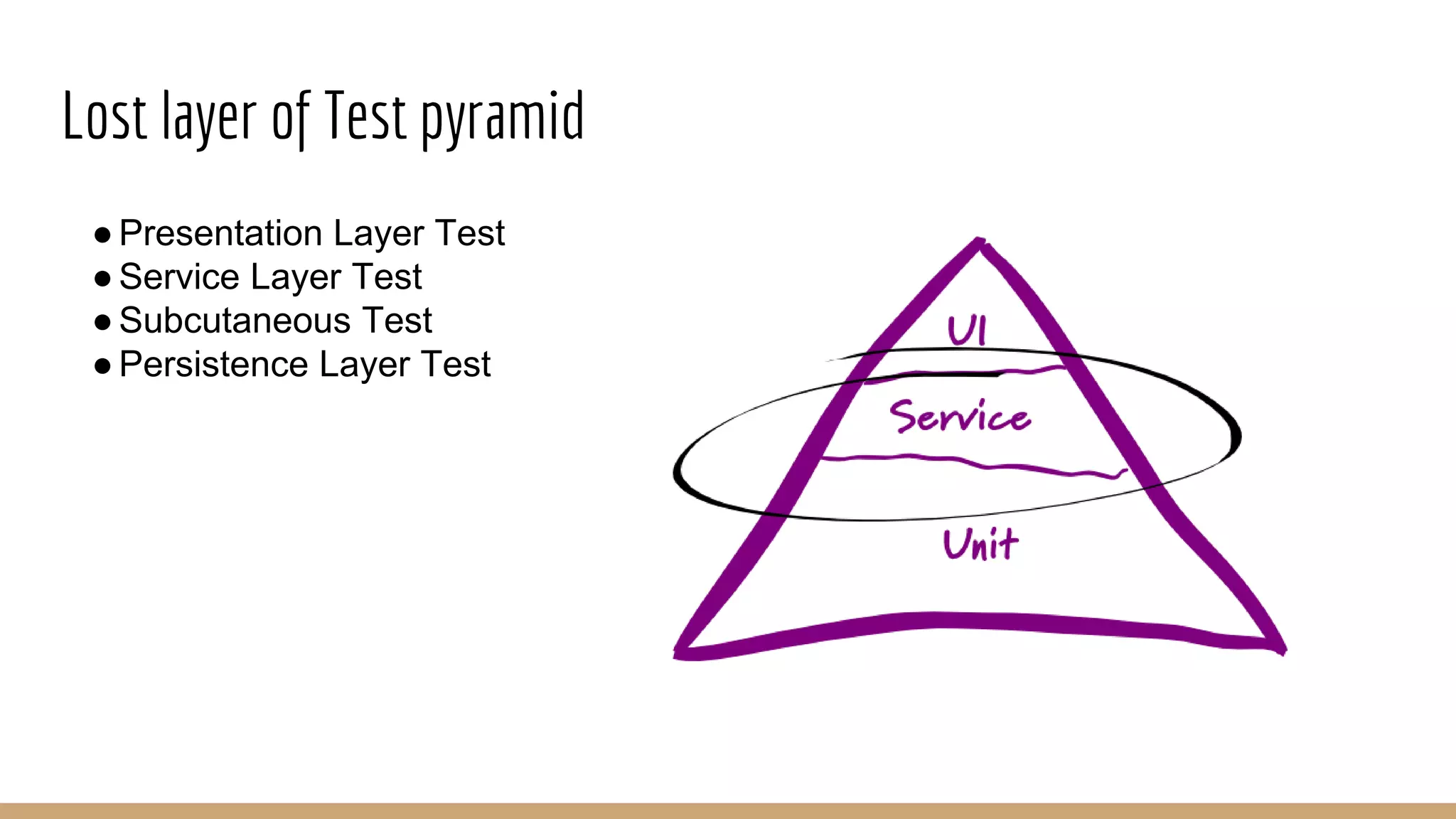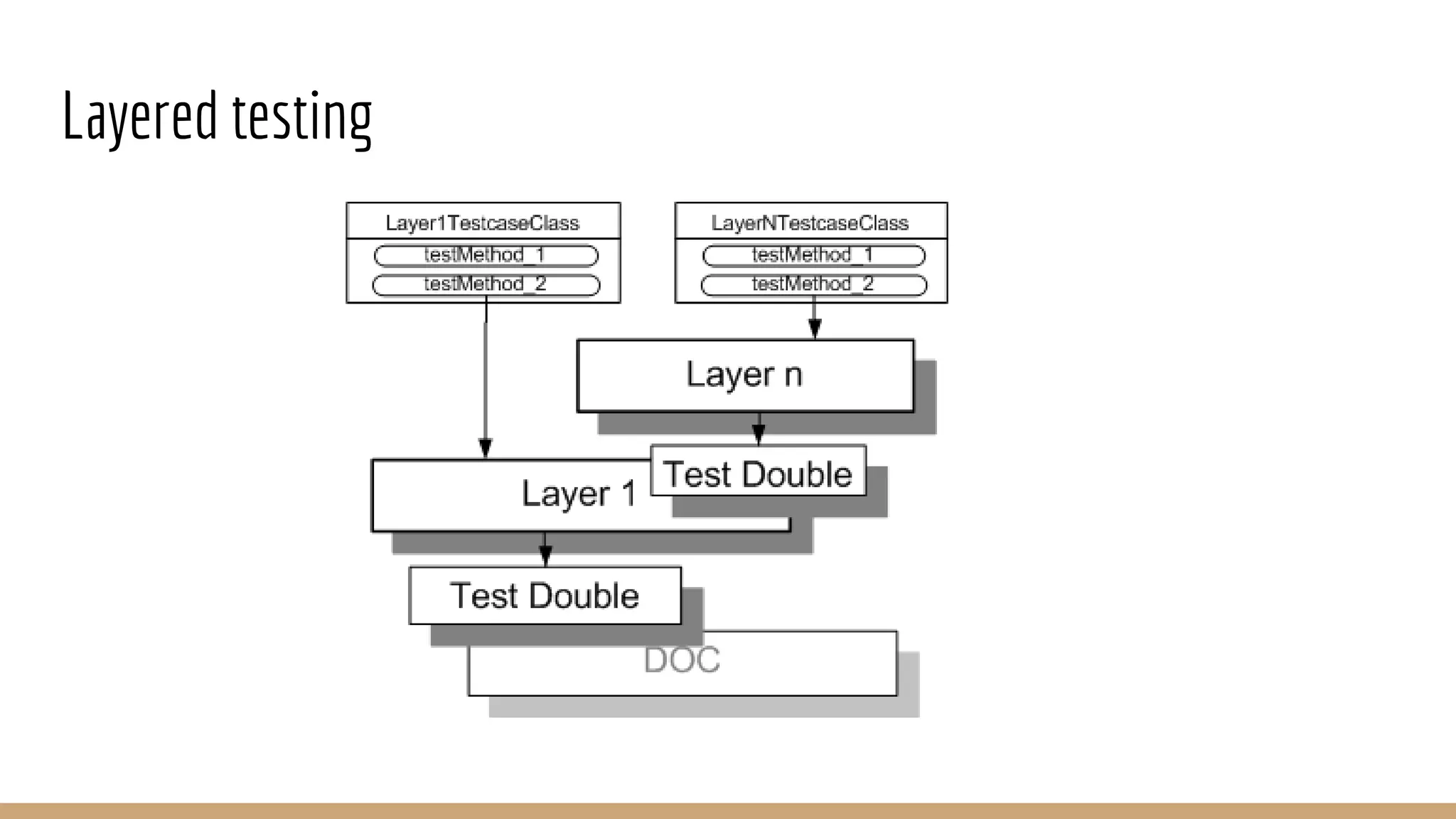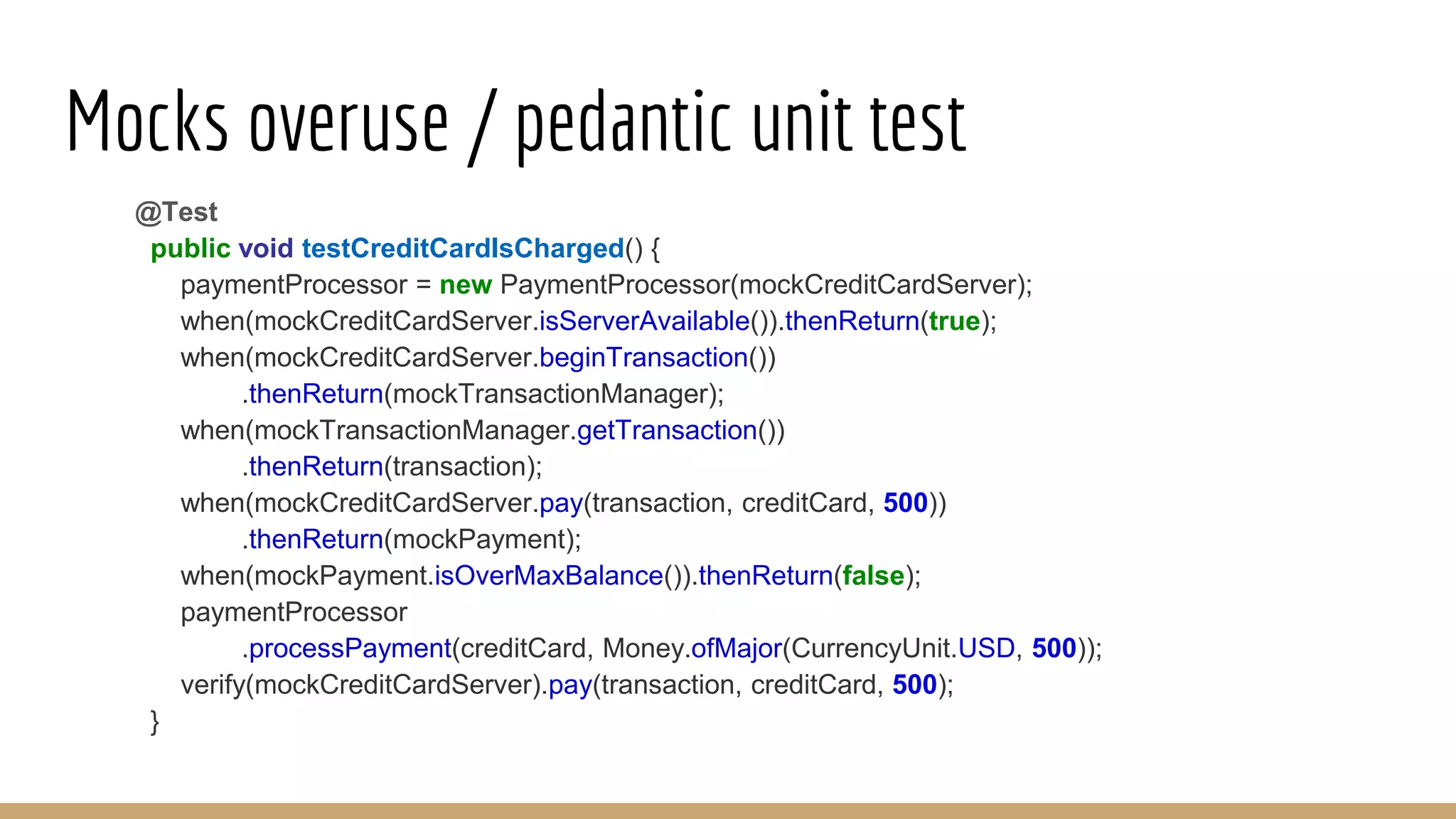This document discusses automated testing and different levels of testing. It explains that automated tests should be written to achieve good design, clarify how a system works, understand the system, and minimize risks. While automated tests require time to write, maintain, and execute, these efforts can be minimized by making tests easy to run and maintain with minimal dependencies. The document also discusses different perspectives on testing, including what developers and customers want. Developers are concerned with complexity and risk, while customers care about functionality and user scenarios. It notes that while unit tests have limitations, acceptance tests are also limited as they are slow, fragile, and not isolated. The "lost layer" of the testing pyramid is also mentioned - the presentation, service, and persistence
